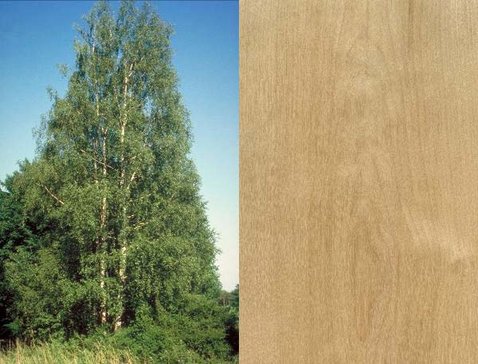
The Holzforschung München of the Technical University of Munich offers a bachelor / master thesis on the following topic.
Description
In the wake of climate change, different native hardwood species are increasingly coming into focus. One such species, which is widely used in northern European countries, is birch. Until now, the mechanical properties of birch from Germany have hardly been investigated. In addition, the potential of different grading methods, which serve as prerequisites for the successful use of wood in construction, is unknown. When grading wood according to load-bearing capacity, the relationship between grading parameters on one side and mechanical properties on the other side is used to classify the wood into classes with defined mechanical properties.
The aim of the present study is to determine the potential of the birch species for use in construction. In particular, the relationship between the visual or machine grading parameters (dynamic modulus of elasticity, knottiness, fiber deviation) and the mechanical properties is to be analyzed. The work is limited exclusively to the evaluation of data already collected.
Translated with www.DeepL.com/Translator (free version)
In detail, the following points are to be worked on (objective)
- Elaboration of the current state of knowledge
- Evaluation of the mechanical tests
- Application of the regression analysis for the investigation of the correlations
- Determination of the mechanical properties of birch wood
- Discussion and presentation of the results
The results of the work are to be presented in an approx. 30-minute talk at the Wood Science Seminar of Holzforschung München and displayed on a poster.
Supervision and further information
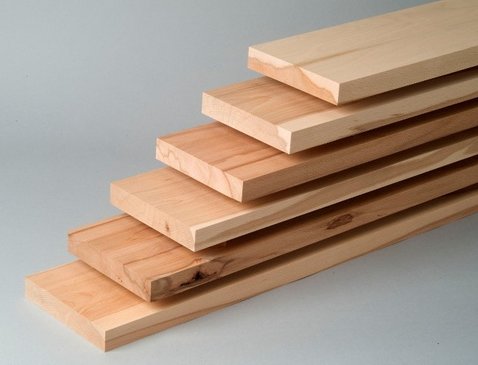
The Holzforschung München of the Technical University of Munich offers a bachelor / master thesis on the above-mentioned topic.
Discription
Strength prediction provides an important basis for dividing the anisotropic and heterogeneous natural product sawn timber into strength classes with defined properties. The respective classifications have hardly been elaborated for hardwood and especially for beech. However, they are an important prerequisite for the use of wood in general and beech in particular.
The aim of the present work is to investigate the relationship between the different visual and mechanical grading parameters (knots, dynamic modulus of elasticity) on the one hand and the mechanical properties (strength and stiffness) on the other hand, and thus to establish a basis for classification. The results are to be compared with the data already collected from other investigations and including the already existing grading rules. The work includes both the recording of the individual grading parameters in the laboratory and the evaluation of the mechanical tests.
In detail, the following points are to be processed (objective):
- Recording of the visual sorting parameters
- Elaboration of the current state of knowledge
- Evaluation of the mechanical tests
- Application of the regression analysis for the investigation of the correlations
- Determination of the mechanical parameters of the examined beech wood
- Discussion and presentation of the results
- Application of the regression analysis for the investigation of the correlations
- Determination of the mechanical parameters of the investigated beech wood
- Discussion and presentation of the results
The results of the work are to be presented in an approx. 30-minute talk at the Wood Science Seminar of Holzforschung München and displayed on a poster.
Supervision and further information

The Holzforschung München of the Technical University of Munich offers a thesis on the above-mentioned topic.
Background
In a current research project at Holzforschung München, long-span wood-steel hybrid elements are being developed for use as ceiling elements subject to bending loads. The elements consist of a trapezoidal steel sheet core that is planked on both sides with laminated veneer lumber. Especially in the support areas, high compressive forces can act transversely to the panel plane, which can lead to buckling of the trapezoidal steel sheet as the decisive failure mechanism, among other things. In this master's thesis, the transverse pressure behaviour of the hybrid elements is to be investigated in the course of an experimental parameter study.
Task
- Comprehensive literature study on the transverse pressure behaviour of laminated veneer lumber as well as on the load-bearing behaviour of trapezoidal steel sheets
- Manufacture of the test specimens and set-up of the test rig
- Planning and execution of experiments to determine the load-bearing capacities and stiffnesses of the wood-steel-wood overall system under transverse compressive loads
- Statistical analysis of the experimental data and development of calculation models to describe the load-bearing and deformation behaviour
- Comparison of the experimental results with model data of the FE analysis
- Requirements
- Very high commitment and ability to work in a team, creativity, good mechanical and material-technological understanding, knowledge of statistical data analysis, manual skills.
Appointment
By arrangement.
Contact
Maximilian Westermayr: westermayr@hfm.tum.de
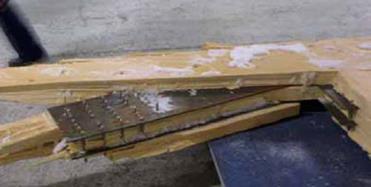
Wood Technology department of the Technical University of Munich is providing the named subject in the form of a master thesis.
Description
Wood is a bio-material with anisotropic and non-homogenous material properties. Damage in wood can happen due to several reasons, including the drying effects, and accumulation of the stresses on the location of joints. Due to orthotropy of this material, different damage parameters should be considered for wood to cover failure of this material both under tension as well as under compression. Damage of wood is ductile under compression and brittle or quasi-brittle under tension and shear. The purpose of this thesis is to enhance failure modes for damage initiation. Different criteria need to be taken into consideration, implemented as user-defined material models in the computational software Abaqus to be investigated on specific benchmark problems.
The following points should be satisfied during the thesis:
- Literature review on different failure criteria for damage initiation in the composite materials and wood
- Implementation and further developement of user-defined material models (UMATs) in Abaqus
- Investigation of UMATs on benchmark problems
-
Damage propagation
Language: English, Thesis available from September 2021
Supervision and further information: Franziska Seeber, Ani Khaloian, Prof. van de Kuilen
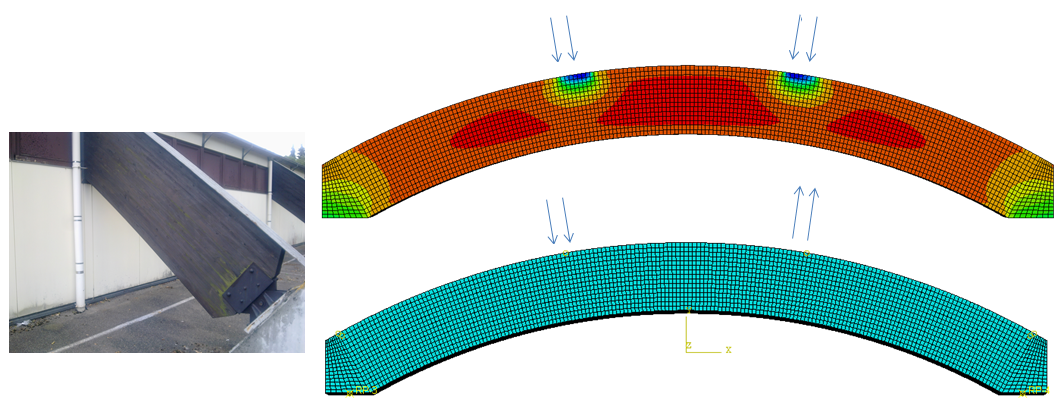
Wood Technology department of the Technical University of Munich is providing the named subject in the form of a master thesis.Wood Technology department of the Technical University of Munich is providing the named subject in the form of a master thesis.
Description
Glued laminated timber is a type of structural engineered wood product or a wooden composite comprising a number of layers of dimensioned lumber bonded together with durable adhesives. This product can be provided in different dimensions and shapes for different applications. Nowadays, curved wooden glulams are being used under varrying environmental conditions. The main purpose of this thesis is to analyse the moisture movement and consequently the residual stresses developed between the layers during manufacturing and service life, considering the influences including adhesive properties, fiber deviations, beam curvatures, etc. By developing an orthotropic viscoelastic mechano-sorptive material model, the influence of the residual stress on the long-term behavior of the structures shall be studied.
The following points should be satisfied during the thesis:
- Literature work to find out moisture-related properties of adhesives and wood
- Further developing the orthotropic viscoelastic mechano-sorptive material model using UMAT of ABAQUS
- FE simulation of moisture transfer in composite member and coupled moisture-stress analysis
-
Parametric study on geometrical and material varriation
Language: English
Supervision: Taoyi Yu, Ani Khaloian
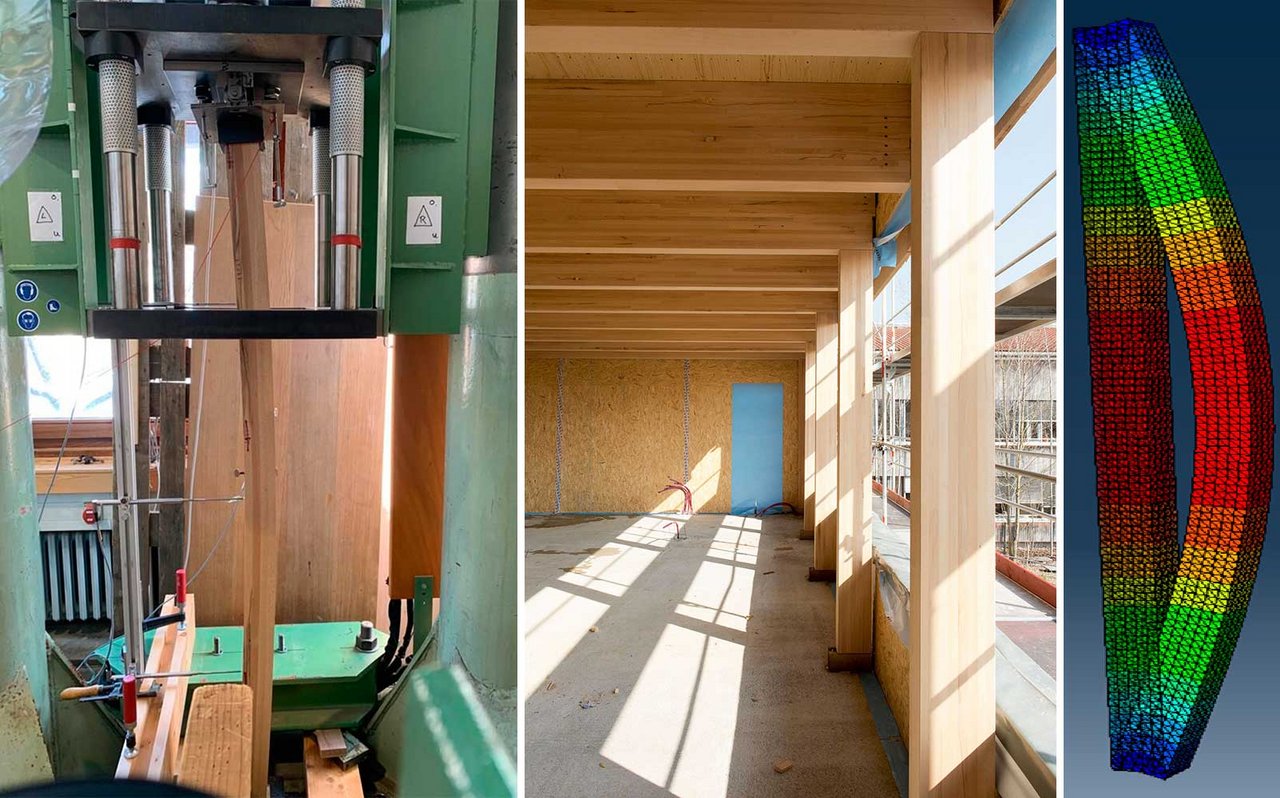
Beech (fagus sylvatica) stock in German forests is increasing [1] while the use of beech wood for construction purposes is not popular yet. Beech glued laminated timber offers high compression strength and stiffness which makes it favourable to be used in load bearing columns. Beside possible material failure due to increase in stresses, these columns may face stability issues, such as buckling as well.
Buckling behaviour of columns can be studied and be modelled by means of Finite Element method. Finite element models, in general need to be validated for their extended use in application. Experimental testing of the buckling behaviour of beech glulam columns has been performed at Holzforschung München without considering structural imperfections in single layers [2]. However, the dynamic material properties of the applied lamellas in the beech glulam are available. Dynamic properties of these lamellas exhibit a correlation with strength and stiffness properties [3]. It was also shown that material heterogeneities and imperfections are influencing the strength properties of beech lamellas. Therefore, after studying the influence of these lamella imperfections on stability of the glulam and by further developing the method for modelling of buckling, setups need to be suggested for glulam beams based on the available dynamic properties of single lamellas in this thesis. In the end, some experimental testing on beech glulam columns will be performed where dynamic properties as well as locations and sizes of the knots in the single layers are known.
Tasks of the thesis are:
- Studying of orthotropic and heterogeneous behaviour of wood and its influence on stability problems.
- Suggesting setups for beech glulam, based on the available strength and stiffness properties of single lamellas from tension tests.
- Further developing the provided approach for simulation of buckling behaviour.
- Performing small set of experiments on beech glulam columns (where the information about imperfections in single lamellas are known) for validation of the model.
Required knowledge:
- Background in modelling and simulations
Date: WS 20/21
Supervisor: Franziska Seeber, Ani Khaloian Sarnaghi
[1] Federal Ministry of Food and Agriculture (2015): The forests in Germany. Selected results of the third national forest inventory.
[2] Zeilhofer, M. (2019): Mechanical behaviour of beech glued laminated timber columns subjected to compression loading. Master’s Thesis, Holzforschung München.
[3] Westermayr, M.; Stapel, P.; van de Kuilen, J.W. (2018): Tensile strength and stiffness of low quality beech (Fagus sylvatica) sawn timber. WCTE.
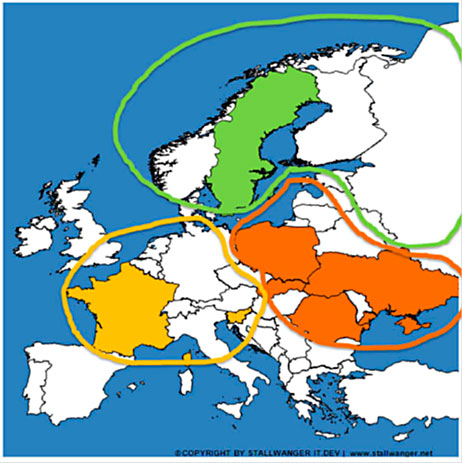
Wood Research Munich of the Technical University of Munich offers a master thesis on the above-mentioned topic.
Description:
Wood is an anisotropic material whose properties vary on different levels (tree-population-growing region). The variation of the mechanical properties of sawn timber can be limited by the timber strength grading. This classification is currently regulated by geopolitical criteria, and is limited for a country or a combination of countries. However, wood properties vary already within a country. The aim of this thesis is to compare the mechanical properties of structural timber and their relations to each other by taking the example of spruce wood from two regions in Germany and examine if quality differences exist and if these can be taken into account for the strength grading of timber. The work includes measurements in the laboratory as well as the analysis of the data by statistical programs.
Your tasks in detail (goal setting):
- Current state of knowledge on the impact of the growth region on the mechanical properties of wood.
- Determination of wood properties on two collectives of test specimen.
- Comparison of wood properties between the examined growing regions.
- Evaluation of the results, considering the data of European growing regions.
The results of this work shall be presented in a 30 minutes presentation as part of the seminar of wood science at Wood Research Munich and be illustrated on a poster.
Supervision & Contact:
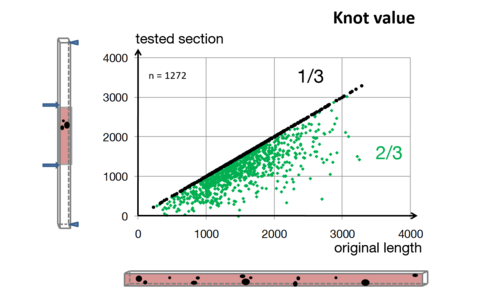
Holzforschung München of the Technical University of Munich offers a graduation thesis on the above-mentioned topic.
Mechanical properties of sawn timber depend on various factors such as tree species, forestry or technical processing. The dimensions of wood have a significant impact on the mechanical properties. For softwood, the correlation of wood volume and strength have been most widely researched, for hardwood though, there is still a lack of knowledge.
This work examines the volume effect for hardwoods. For this purpose, the strength properties of specimens with various lengths and qualities are analyzed and a mathematical model is developed.
Tasks in detail:
- Literature review on the volume effect.
- Evaluation of the test results.
- Clear presentation and discussion of the results.
Bachelor thesis or master thesis
The results of the work shall be presented at the seminar of wood science at Holzforschung München. Duration: 30 minutes
Supervision & contact:
